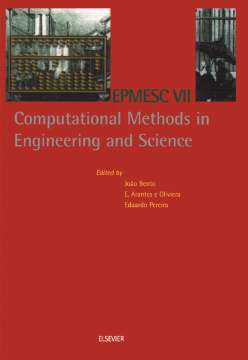
Additional Information
Book Details
Abstract
The first EPMESC Conference took place in 1985. It was during the Conference, recognising the success it had been, that the promoters decided to organise other EPMESC conferences, giving birth to a new series of international meetings devoted to computational methods in engineering.
The variety of subjects covered by the papers submitted to the 7th Conference demonstrates how much computational methods expanded and became richer in their applications to Science and Technology. New paradigms are being cultivated as non-numerical applications started to compete with the more traditional numerical ones. The scientific and technological communities to which the EPMESC Conferences used to be addressed themselves have changed.
The two-volume Proceedings that we achieved to gather represent many of the interesting developments that are taking place, not only in the Asia Pacific Region, but also in some other scientifically advanced parts of the World, and cover a vast list of subjects grouped under the following headings: Applied Mathematics; Physics and Materials Science; Solid Mechanics; Finite Element and Boundary Element Methods; Structural Analysis; Structural Dynamics and Earthquake Engineering; Structural Engineering; Reinforced Concrete; Knowledge-Based Systems; Artificial Neural Networks and Genetic Algorithms; Computer-Aided Instruction; Computer-Aided Design and Computer-Aided Engineering; Geographic Information Systems; Environmental Applications; Road Engineering; Geotechnics; Soil Mechanics; Fluid Mechanics and Hydraulics.
Two hundred and fifty one summaries were accepted, many of them with comments and restrictions, by the Programme Committee.
From these, 153 papers resulted, many of them from Portuguese and Chinese origin, that were submitted to the revision of an international panel of referees from Australia, Belgium, Brazil, China, Italy, Macao, Portugal, Switzerland, United Kingdom and United States, to which we gladly acknowledge our gratitude and appreciation.
